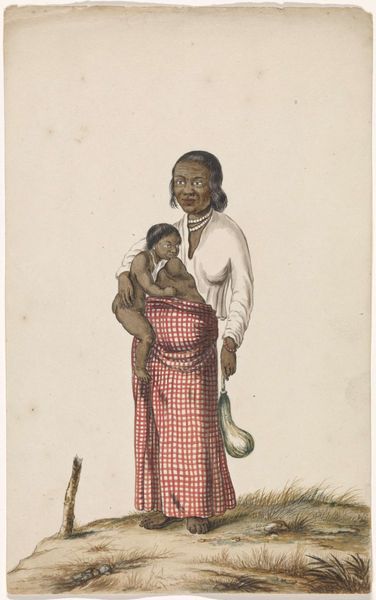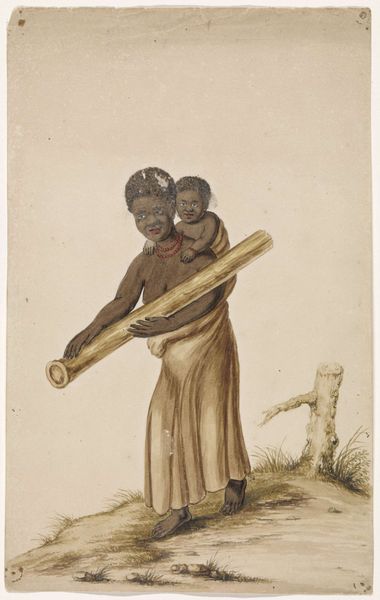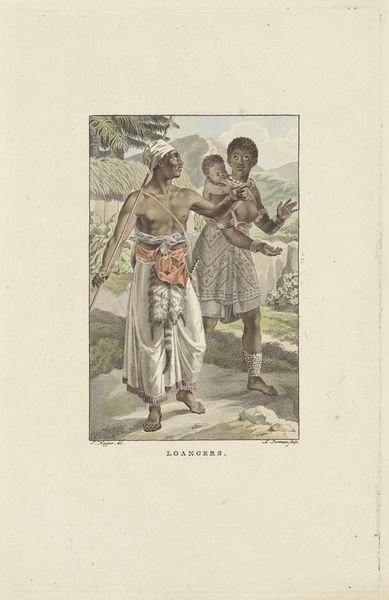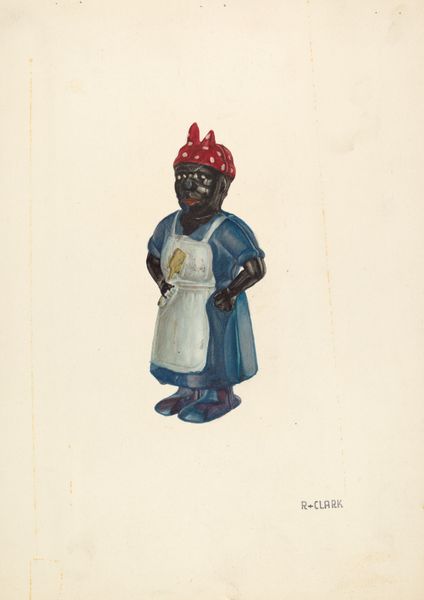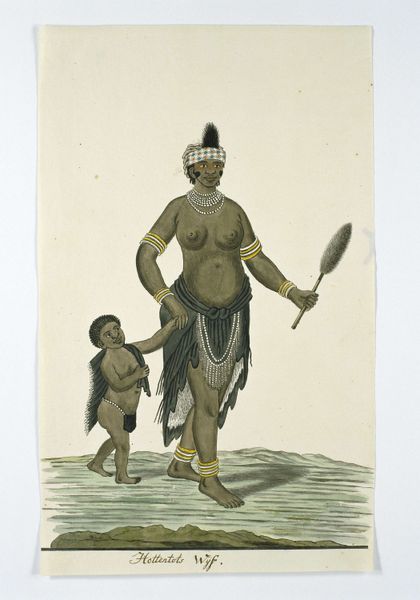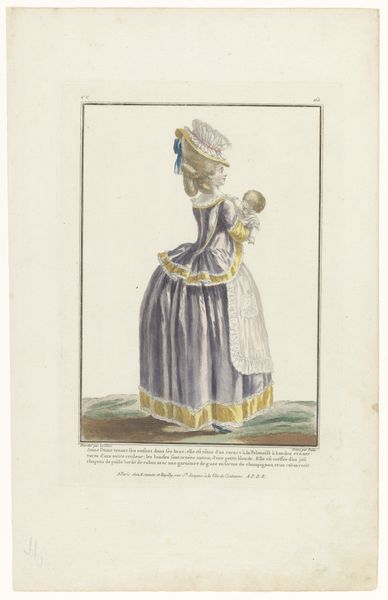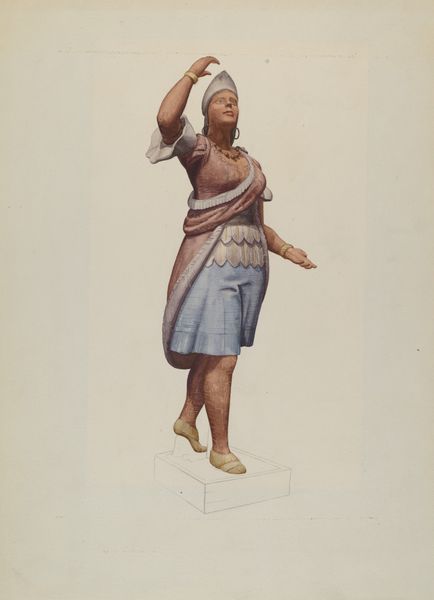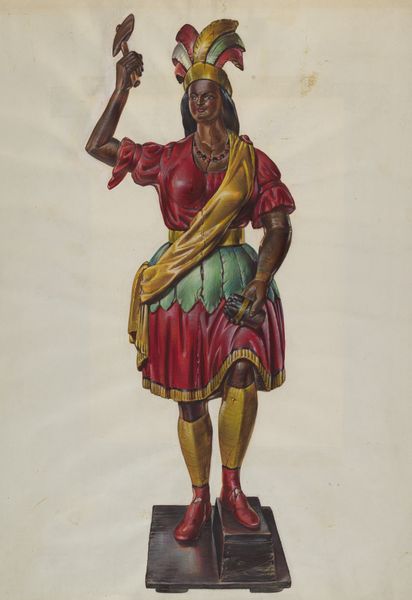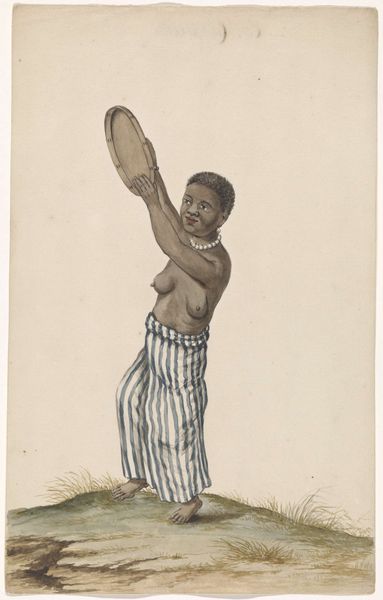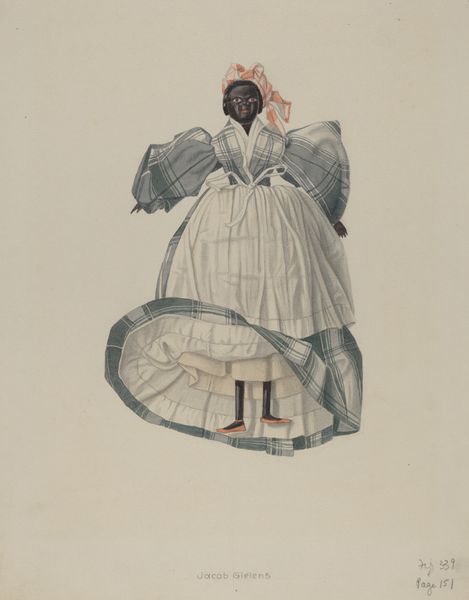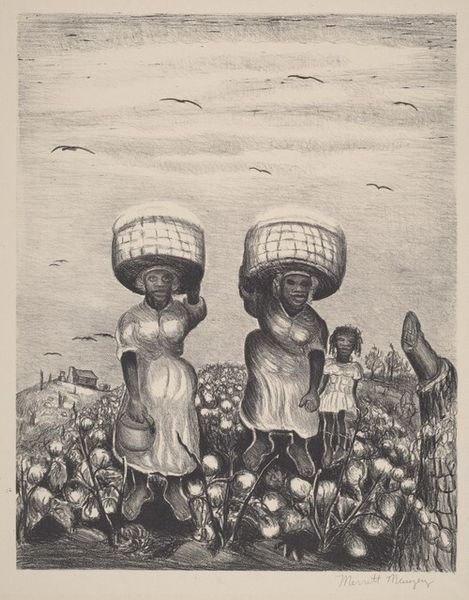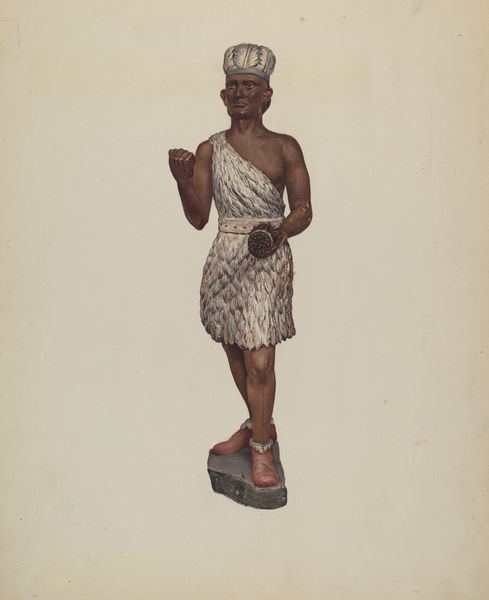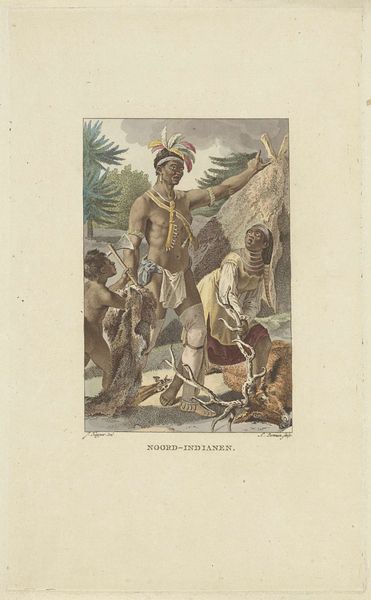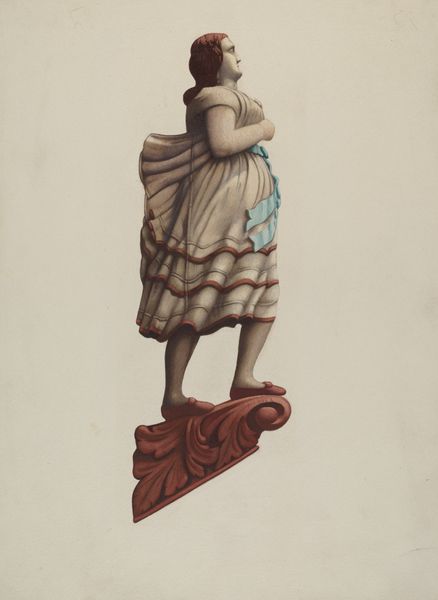
#
portrait
#
watercolour illustration
#
watercolor
Dimensions: height 320 mm, width 200 mm
Copyright: Rijks Museum: Open Domain
Curator: Let's turn our attention to a work titled "Vrouw met kind en spijsdeksel," which translates to "Woman with child and food cover," estimated to have been made sometime between 1675 and 1725. The anonymous artist chose watercolour for this piece. Editor: My immediate reaction is one of quiet curiosity. There's an unsettling simplicity to it, and the flatness adds a layer of... detachment, I think. It almost feels anthropological. Curator: Precisely. Consider the context in which it was created; that period was marked by increased encounters with diverse cultures. This watercolor becomes a document of those encounters, influenced by a colonial gaze trying to make sense, visually cataloging a foreign reality. Editor: The title feels loaded, though, doesn't it? The "food cover" becomes a point of focus that's completely devoid of context. Who is she? What is the nature of their relationship? And why the odd detail of the cover. Are we meant to see this encounter and documentation of an Indigenous woman and child as representative, rather than specific? Curator: Undoubtedly. We are seeing a record shaped by a European perspective. But we can still try to interpret her posture and gesture to understand something beyond a mere study of customs. It invites dialogue between cultures that, at that time, existed in a hierarchy, something deeply ingrained. Editor: The child clinging to the mother also gives me pause, considering how easily such intimate bonds were disrupted due to enslavement. The watercolours are delicately used. There is, dare I say, a genuine attempt at realism; the artist seemed genuinely trying to document this woman and her child. Curator: It's important to not read these pieces only as "objective" observations, but rather works of great political force. Art serves a societal role; it shapes collective perception. Editor: Exactly. We have to examine them with care, because ultimately, their importance goes way beyond that of mere aesthetic value. They present narratives rooted in inequality and systemic erasure, too. Curator: Indeed. Recognizing the complexities inherent to "Vrouw met kind en spijsdeksel" gives us a broader, more critical perspective to analyze such art. Editor: It makes me want to dig deeper, beyond surface-level impressions, to uncover these narratives for ourselves.
Comments
No comments
Be the first to comment and join the conversation on the ultimate creative platform.
